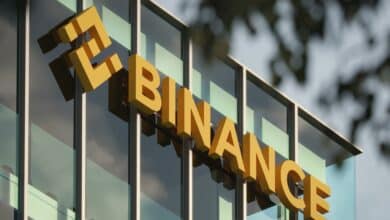
You are likely to find bull flags in the forex market, but you can also spot them in other markets. The bull flag pattern can be found in any market, but it’s most easily identified when trading currencies or stocks.
The bull flag pattern looks like an inverted V on a chart and typically signifies a period of consolidation before an upward breakout occurs. Although this isn’t always the case, many traders look to this pattern as an indicator that the stock or currency will break out of the consolidation point and move higher or lower in the next few days.
What is a Bull Flag Chart Pattern?
A bull flag chart pattern is a technical analysis tool consisting of a series of horizontal bars that typically have a length and width consistent with the market’s overall trend. The pattern is named after the flag used by bull traders in the financial markets.
The purpose of using a bull flag chart pattern is to identify market trends and make profitable trades during these trends. To identify a bull flag chart pattern, you must first identify an uptrend in the market.
Once you have placed an uptrend, look for a series of horizontal bars consistent with this trend. The length and width of these bars will depend on the movement’s strength, but they should always be within bounds of what would be expected for this type of chart pattern.
Once you have identified a bull flag chart pattern, it is essential to monitor it closely for signs that it has ended or is about to end. If you see signs indicating that the trend has been completed, you should sell your shares in the market and wait for another opportunity to repurchase them at a lower price. If you see signs indicating that the trend is about to end, you should buy into the market before it goes down further.
Finding the Bull Flag Pattern
The pattern can identify potential buy and sell points for stocks, currencies, or commodities. When traders see the bull flag chart pattern, they may want to take action based on the information within the bars.
For example, if a stock is trading at its lows and appears to be headed for a breakout above the bull flag bar, then the trader may choose to buy the stock. Conversely, if a stock is trading near its highs and appears to be headed for a breakout below the bull flag bar, the trader may choose to sell the stock.
How to Spot/Find a Bull Flag Chart Pattern?
A bull flag chart pattern is a technical analysis tool to identify periods of increased stock prices. The pattern is created when the price of a security rises rapidly and then falls back down, repeating the process repeatedly.
To find a bull flag chart pattern, you first need to identify an uptrend in the stock price. Once you have placed an uptrend, look for a period of high volume (measured in shares traded) that follows the uptrend. The next step is to look for a reversal in the stock price, which will indicate that the bull flag chart pattern has been completed.
Why Is It Important?
A bull flag chart pattern is one of the market’s most common and well-known technical indicators. It is named after the flag that is typically flown when a bull is near the slaughterhouse. The flag represents optimism and strength.
When a security’s price moves above its 200-day moving average and falls below it again, this creates a bull flag chart pattern. The shape of the flag can be triangular, inverted, or some other basic form. What’s important is that there is usually a reversal after the pattern has been formed.
If you’re looking for an indicator that can help you identify strong trends in the market, look no further than a bull flag chart pattern.
Features
A bull flag chart pattern is a bullish technical indicator used to identify the possibility of an increase in stock prices. When used in conjunction with other technical indicators, it can help you make informed investment decisions.
The basic idea behind a bull flag chart pattern is that prices will stay above their resistance level for an extended period before dropping. It indicates that there is strong demand for the stock and that investors are optimistic about its future.
The best entry signal comes when the flag is broken, which takes place during 3rd stage usually. The initial gains objective usually for a bullish flag pattern will be the previous swing high, and its consolidation structure may function as a stop/loss level for the trade.
Follow the steps below to identify the bull flag pattern on a chart:
- Recognize the upward movement, which can be depicted as a run of high-trending bars along very few retracement bars. This momentum can be considered to be building.
- Watch for a corrective action, which will form a downward trend channel with a structure similar to a lower bottom.
- Determine the point at which you will place the order, which will be the breakout level.
If you see all three elements in a chart, you’re likely looking at a bull flag chart pattern.
How to Trade With A Bull Flag Pattern?
Cryptocurrency traders that employ a bull flag pattern trading strategy look for an entry point. When the structure involved in framing the flag cannot keep up its fall after the identification of a bullish pattern, it is known as a “breakout.”
Traders validate the bull flag signal by watching the price of their chosen cryptocurrency while using a volume indicator. Afterwards, using the price chart, cryptocurrency traders will utilize a volume indicator to make their forecast: trading volume would decrease while the price is being corrected.
If the trading volumes increase after the specific pullback and its price breaks through the highest value of the bull flag, the trend is likely to continue. However, the support line of the bull flag should be placed below its stop/loss order, and traders sometimes use the risk-to-reward ratio to exactly determine where the take-profit point should be. How trustworthy is a pattern known as a bull flag, then?
Although the bull flag pattern indicates continuation patterns, the risk-reward profile of the trader is the most critical factor in determining whether or not a crypto trading strategy will be successful.
In addition, whether an investor makes a profit or incurs a loss depends on the goals they have set for their investments and whether investors understand the signals specified for trading bull flag patterns. These signals include rising crypto prices on relative volumes or prices that exhibit a unique pullback pattern as they consolidate near highs.
A Bull vs. Bear Flag Chart Pattern
The bull flag chart pattern is a technical analysis tool which traders can use to identify patterns in price movements over time. The pattern consists of a series of ascending channels that form between support and resistance levels. When prices break out of the track, they often reach new highs or lows.
An increase in stock demand typically accompanies the bullish outcome of the bull flag chart pattern. When prices break out of the channel, investors may see opportunities to purchase shares at a lower price than they would have otherwise.
In contrast, the downtrading outcome of the bull flag chart pattern is typically associated with decreasing demand for stocks. When prices fall below the support level, many investors may sell their shares in anticipation of further declines.
A bull flag is quite similar to a bear flag, with the primary difference being that it indicates an upward trend. Traders can better detect bullish flag formations when a trend halt follows a strong rally in the shape of a flag. On the other hand, a bear flag pattern is formed when a bearish or downward trend is traced by a pause in the consolidation zone. This lull in the market is what gives the pattern its name.
Risks & Benefits of a Bull Flag Pattern
A bull flag pattern is a technical analysis indicator that can identify opportunities for buying and selling stocks. The pattern consists of three consecutive bullish candles, followed by two bearish candles.
The benefits of using a bull flag pattern include that it can provide early indications of price increases or decreases and potential turning points in the stock market. However, there are also risks associated with this type of trading strategy.
If the stock market falls after the bull flag pattern has been formed, investors may lose money on their investments. Additionally, suppose the stock market rallies after a bull flag pattern is formed. In that case, investors may be unable to profit from their investment because they missed out on rising prices.
It is essential to understand how to interpret a bull flag pattern before investing in any stocks based on this indicator. Trading rules and indicators should always be used in conjunction with one another to ensure accurate trading decisions.
Strengths and Weaknesses
The bull flag pattern is a bullish technical chart pattern consisting of two parallel price columns. The first column (the “lower flag”) is lower than the second column (the “upper flag”). The bulls are buying these lower prices and pushing the prices up, creating the pattern.
This pattern can be used as a buy signal if you want to enter a market at a lower price than where the current pattern is. However, it can also be a sell signal if you want to exit a market before it increases.
One weakness of this pattern is that it can be easily overextended if you buy into it at too high of a price. Another weakness is that the flags may not stay in place for very long, so you may have to watch closely to see if they form again.
The Psychology Behind Every Bull Flag Chart Pattern
The bull flag chart pattern is a technical indicator that identifies overbought and oversold conditions in the stock market. The pattern consists of declining peaks and valleys that indicate when the stock market is pricing too much or not enough value relative to the current actual prices. When a bull flag chart pattern is present, it can indicate that the market is about to experience a significant price decline.
The bull flag chart pattern can also be used as an entry point into the market if you believe there will be a price decline. By identifying this technical indicator, you can make informed decisions about when and how to enter the market.
How to Trade Using Bull Flag Chart Pattern
Step No. 1: Spot the Pattern
If you’re new to trading chart patterns, then the bull flag might be one you want to avoid. This pattern typically occurs when a security’s price moves higher and starts to pull back. The flag usually consists of two or more consecutive lower highs and lows. If you see this pattern, it’s best not to buy in until after the pullback.
Step No. 2: Buy the Breakout of the Highest Trendline
When you see a bull flag chart pattern, you know the trend is still going strong. To trade this pattern, you need to find the breakout of the upper trendline. It is usually easy to spot since it’s the point where the stock price starts to increase rapidly after falling for a while.
Once you have found the breakout point, watch for signs that the trend is about to end. If the stock price decreases again, it’s time to sell and avoid getting caught in another bull flag pattern.
Step No. 3: Close Your Position
If you are trading a bull flag chart pattern, it is essential to close the position before the pattern fails. The rule of thumb is to sell when the price reaches the bottom of the flag and buy when it comes to the top.
Instead, the take profit level ought to be positioned at a specific price above the usual breakout point and is equivalent to the height of the last flag pole. Example, if security rose 10 dollars in the flag pole, you will be required to set your objective 10 dollars above the breakout point. One of the advantages of the chart pattern is that it has a high likelihood of making a cognate move along with the predominant trend. It is one of the chart pattern’s strengths.
In this place, there are no strict regulations. However, many assets traded on small-cap exchanges are vulnerable to sudden price increases. The chart may generate a double-top on the previous flagpole if such a move occurs. To determine a price goal for the deal, market participants should investigate the trading record of the asset.
A Fibonacci pattern may help target higher take profits on most assets. At the same time, a logarithmic chart is helpful for quickly enhancing small-cap assets such as crypto or penny stocks. Both of these types of assets are examples of assets with relatively low market capitalization.
Useful Considerations To Trade Bull Flag Charts
Keep the Context in Mind
When trading Bull Flag chart patterns, keeping the context in mind is essential. A Bull Flag chart pattern is identified by a flag that extends above the previous price level and below the current price level. The flag should be accompanied by concrete volume action, which suggests that traders are bullish on the underlying asset.
Wait Patiently for Confirmation
When identifying a bull flag chart pattern, traders must wait for confirmation before making any trades. Confirmation can come in the form of an upside breakout or reversal, meaning the price action moves significantly higher than before the flag’s formation. To avoid being taken advantage of by false signals, traders should also use technical indicators to help confirm patterns.
Remember, Patterns Don’t Always Work
There’s a lot of talk about “patterns” in trading, but what do they mean? A pattern is simply a recognizable sequence of movements in prices. Most chart patterns involve two or more price bars that predictably follow.
But patterns don’t always work. Sometimes they produce false signals that lead to losses. Let’s look at how to recognize a bull flag chart pattern and determine if it’s worth investing time and money into it.
First, let’s look at what the bull flag chart pattern looks like on an actual stock exchange chart:
- The bull flag chart pattern consists of two parallel trendlines extending off the bottom of the stock’s price column.
- The first trendline is higher than the second, and both trendlines are gradually moving up.
- This pattern usually occurs after a stock has experienced solid movement upward for some time and indicates that there’s still plenty of upside potential left in the market.
If you see this pattern forming on your stock exchange charts, it might be worth investing time and money into it. However, remember that not all bull flag charts produce valid signals; sometimes, they’re just coincidences caused by market fluctuations. So before you invest any severe capital into this type of charting strategy, make sure to do your research first.
How Reliable Is a Bull Flag Pattern?
The reliability of a bull flag chart pattern depends on the accuracy of the signals it sends. If the signals are accurate, the pattern will likely continue and lead to a positive result for traders who follow it. However, if the signs are inaccurate, the pattern may not continue and could lead to a negative outcome for those who trade based on it.
Conclusion
In this article, we will discuss the bull flag chart pattern and how to spot it. This trading strategy is used in technical analysis. Traders often use it to indicate when a stock or commodity is about to experience a price increase. By understanding the basics of this pattern, you can start to see patterns in the market that could indicate an opportunity for profit.
Tokenhell produces content exposure for over 5,000 crypto companies and you can be one of them too! Contact at info@tokenhell.com if you have any questions. Cryptocurrencies are highly volatile, conduct your own research before making any investment decisions. Some of the posts on this website are guest posts or paid posts that are not written by Tokenhell authors (namely Crypto Cable , Sponsored Articles and Press Release content) and the views expressed in these types of posts do not reflect the views of this website. Tokenhell is not responsible for the content, accuracy, quality, advertising, products or any other content or banners (ad space) posted on the site. Read full terms and conditions / disclaimer.







